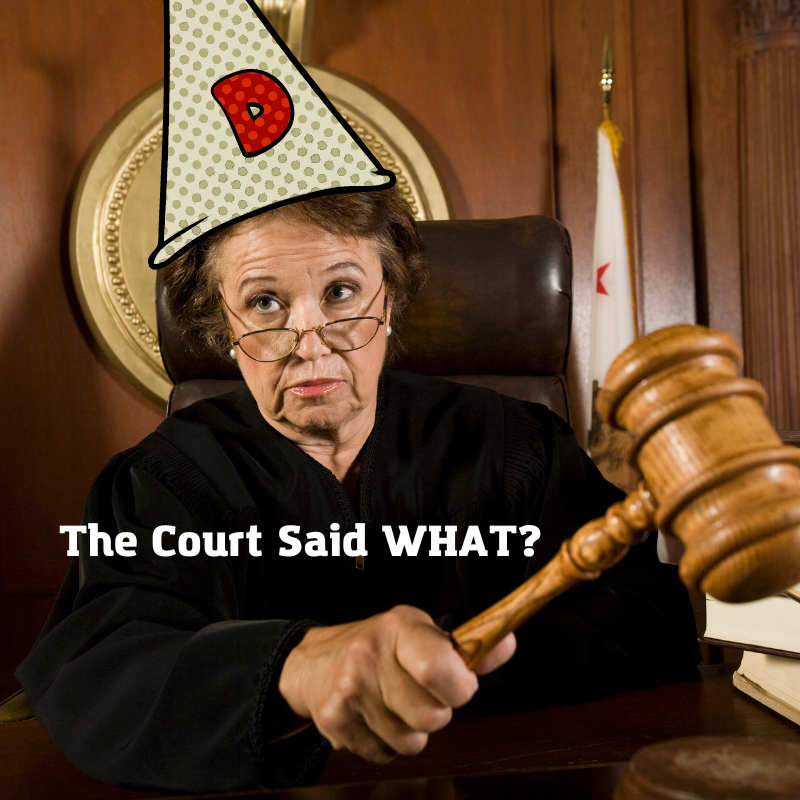B.L.U.F. The Eleventh Circuit Court covering Florida had a three judge panel decided that 18-20 year olds couldn’t buy firearms. The opinion is a hot take.

Emotional Blackmail Works
The three judge panel’s opinion was written by Circuit Judge Rosenbaum. She starts the opinion with some emotional blackmail, telling us that young adults have been shooting people for a very long time using newspaper reports from the 1870’s. She is using this to get the following statements into the opinion:
— Opinion of the Court — NRA v. Bondi
Double emphasis added.
In Bruen quoting Heller the Supreme Court established that when talking about the history and tradition of firearm regulation that the date to look at is 1791, the ratification of the Second Amendment. The founding period extends, at the latest, to 1826 when the last of the founding fathers died. Laws from the Reconstruction Era can be used to reinforce those traditions but can not be used if not supported by a tradition dating back to 1791.
Age Bans are Legal If You Use Reconstruction Era Laws
Judge Rosenbaum wants to use Reconstruction Era laws to justify the current law.
She also mentions “persistent societal problem”. This is a reference to Bruen where the Bruen Court said that if it was a persistent societal problem then the way that our founding fathers regulated would be controlling. It is only when it is a new societal problem is a more nuanced approach to finding analogous firearms regulation allowed. See discussions in Duncan v. Bonta and Rupp v. Bonta where they are attempting to label mass shootings as a new societal problem.
She references a CBS 60-Minutes episode to prove that automatic assault rifles can shoot … with enough force to liquefy organs.
Id.. The article is a report on the episode where they showed penetration demonstrations against ballistics gel of 9mm handgun vs 5.56 rifle. Using the standard lie of omission they did not mention the type of ammunition used.
It is not clear which “expert” stated that a 5.56 round can “liquefy organs” but it looks like the Judge is using the opinion of a reporter. Not an “expert”. In other words the judge is using a tucker expert.
— Id. P.4
She is still focused on the Reconstruction Era, ignoring the Bruen Court and then uses a weasel word phrase “like pistols”? We find the reason later in her opinion:
— Id. P. 16,17
I’m surprised because this does sound like a analogues regulation. The next question is when was this law overturned, if ever? That I couldn’t easily find, but Duke Law to the rescue.
— Wade Keyes, The Code of Alabama, 1876 : with References to the Decisions of the Supreme Court of the State upon the Construction of the Statutes; and in Which the General and Permenent Acts of the Session of 1876-7 have been Incorporated Page 901, Image 917 (1877) available at The Making of Modern Law: Primary Sources.
It is interesting that her quote and the quote pulled from the Duke Center for Firearms Law differ. And in our favor.
The Judge then uses a couple of court cases referencing minors as being under 21 years of age to support her position that this law supports banning 18-20 year olds from buying firearms.
A. Historical sources from the Reconstruction Era are more probative of the Second Amendment’s scope than those from the Founding Era.
— Opinion of the Court. P. 8
Double emphasis in original.
— Opinion of the Court. P. 10
The Judge says that it is Reconstruction Era that should control. This is at odds with how others, including myself, read the Heller and Bruen opinions. She does acknowledge that the Supreme Court hasn’t ruled on the question of which time frame should be controlling.
Here, Judge Rosenbaum, says the same thing But an assumption is not a holding. See, e.g., Brown v. Electrolux Home Prods., Inc., 817 F.3d 1225, 1239 (11th Cir. 2016) (explaining that the Supreme Court’s “assumptions are not holdings”).
Opinion of the Court – P. 11
The NRA’s conclusion is incorrect. The NRA mistakes a legal obligation for a right. See Heller, 554 U.S. at 605 (explaining that the Second Amendment “protect[s] an individual right unconnected with militia service”); see also id. at 582, 601, 608, 610, 611, 612, 613, 616, 617. The fact that federal law obliged 18-to-20-year-olds to join the militia does not mean that 18-to-20-year-olds had an absolute right to buy arms.
— Opinion of the Court P. 30
The NRA mistakes a legal obligation for a right
. Let that sink in. No, the NRA argued that the obligation implied that there was a right.
Conclusion
This case has a single attack vector, that the laws governing bans on sale of arms to 18-20 year olds need to match to Reconstruction Era laws. If the required analogous laws were passed on founding era the bans would fail. It isn’t clear if the court is misrepresenting what was actually banned during the Reconstruction Era but those laws should not be considered as justifying modern bans.
At least one judge on the Eleventh Circuit Court thinks there is something wrong with this opinion and has called on the court to decide if they will hear the case en banc.

Appreciate again, your covering of the gun law cases. I always understood that semantics played a part in the decision-making process but didn’t realize just how corrupt it was or had become in recent years. Is it a mistake to think that deceptive, dishonest, even illogical word play in the law-making process, has progressively become worse over the past fifty years?
iirc, the ‘liquefy organs’ trope came from one of the examiners during a press conference after Uvalde.
They’ve latched onto that one like a drowning man because ‘science’.
Great analysis of the Eleventh Circuit Court’s recent decision. The article carefully examines the court’s arguments and references related cases, providing insightful commentary on the issue.